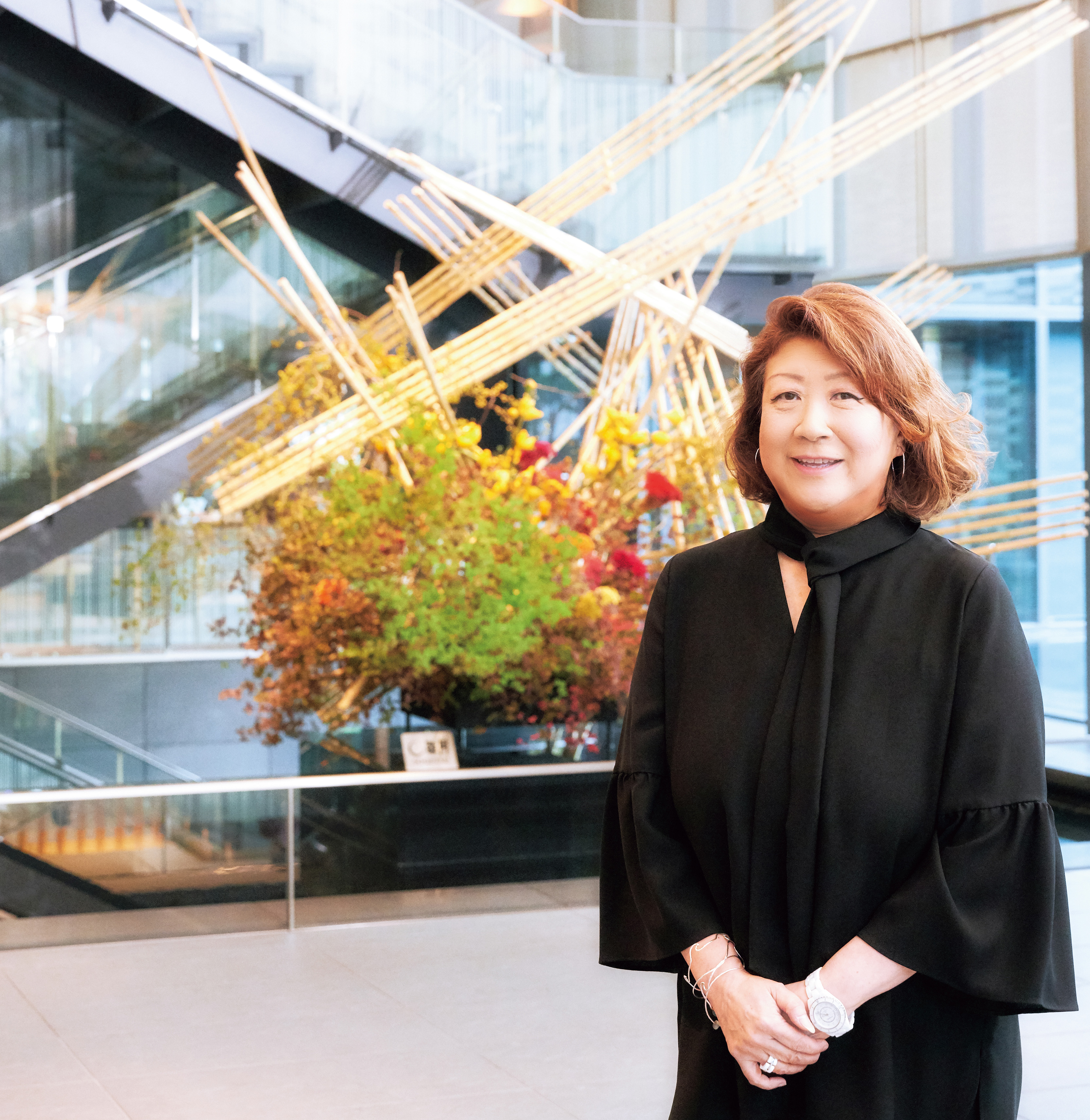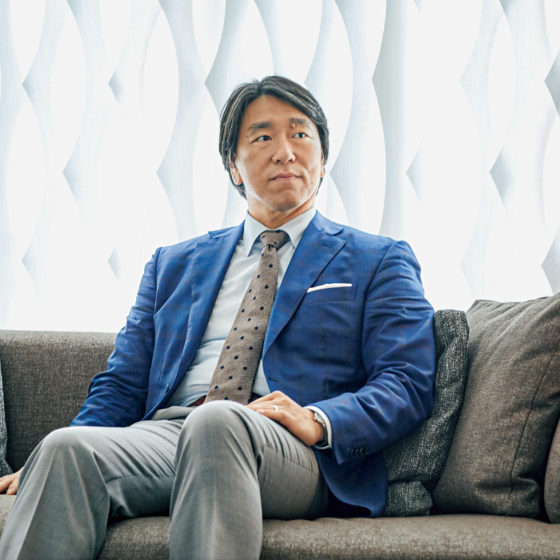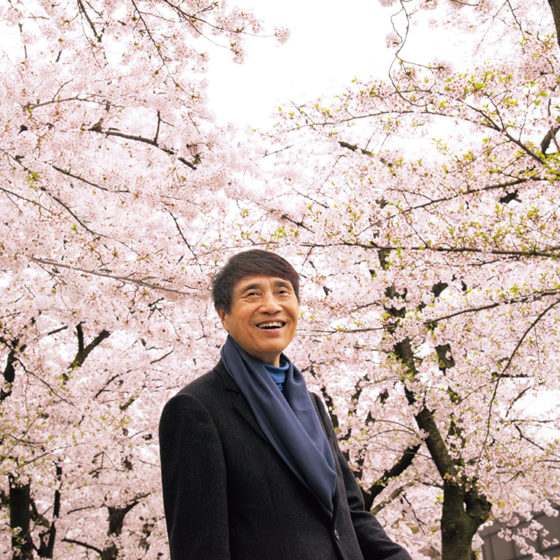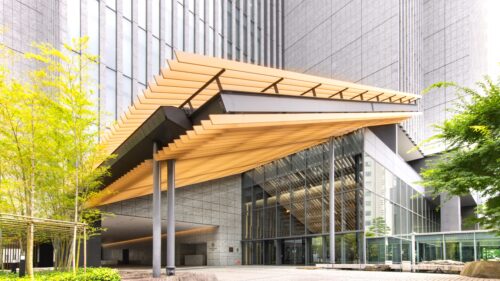- It’s a memorable place from the time of my grandfather, Sofu Teshigahara. Tokyo Hilton Hotel, the predecessor of this hotel, opened in 1963, a year before the Tokyo Olympics. Since then, Sofu had been arranging flowers for this place, and later the Sogetsu artists took over.
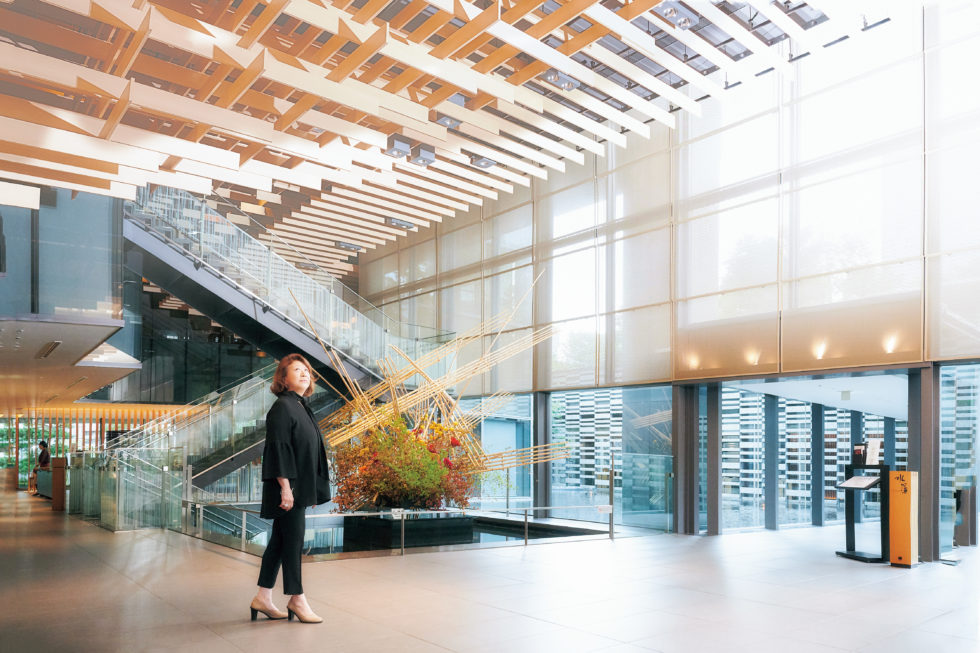
- It’s right in front of the entrance, so it’s important how much we can move people’s hearts before letting them pass through. That’s what we aim for when we arrange the flowers. Being in a hotel, we are able to showcase such a large piece to a lot of people. I really appreciate that we can display our work here.
- It was also Sofu who started such a thing, and I think he was a great person even though he was my own grandfather. He was a heretic when he was young, and some people said, “We cannot keep such a person in the world of ikebana”, but my grandfather said, “Ikebana would be meaningless if everyone had the same result.” He thought, since each person is different, it’s only natural that the arranged flowers turn out to be different. When you arrange the flowers, they will become yourself. The mainstream idea at the time was that the final shape should be the same no matter who arranged the flowers, so I think he was considered even more heretical.
- Such liberal works were highly praised overseas, and like a reimported culture, my grandfather was considered as “a great man” when he came back to Japan.
- I didn’t understand that as a child. My grandfather was “an amusing adult” in my eyes. We lived together at that time. He was free and accepted everything, and he was such an amazing person that made me wonder what kind of person he was.
- For example, he stuck thin rice crackers into freshly cooked rice, poured soy sauce and tea on it, and said “This is the most delicious thing in the world” (laughs). My grandmother annoyingly said “He has bad manners” but the way he ate it made it look so good. We children were so happy. He was a kind of person who made everything in his life a fun game.
- I think because of that free mind, he was able to do such a thing in that era. My grandfather’s works have not aged at all. Without being bound by the tradition, he was able to see the distant future. I think he was a man of foresight.
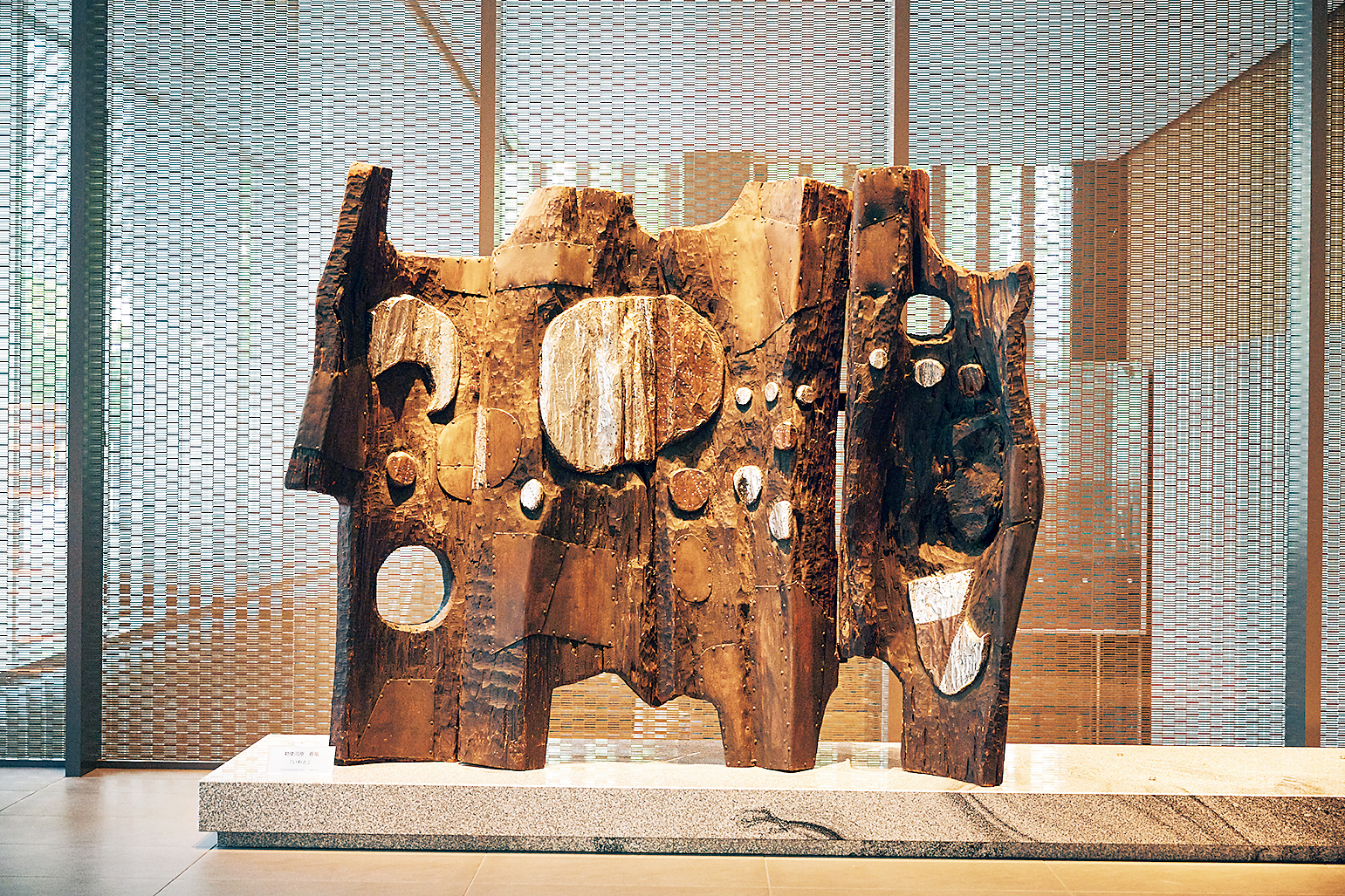
Enjoying a life with flowers with an open mind
- Probably quite a few people think of ikebana as something formal and difficult, imagining the words “manners” or “convention” in their minds.
- But being established by a person like my grandfather, Sogetsu School is not something stiff. There are no rules for enjoying flowers. In a sense, ikebana is very simple.
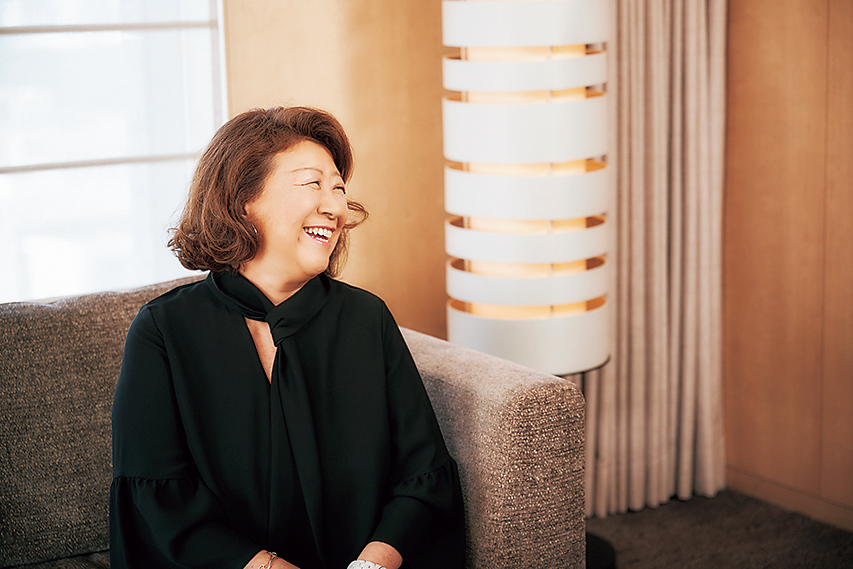
- There is always a place in your house where you would want to put flowers. Go ahead and decorate those places with flowers. It does not matter what kind; a single flower you bought from a nearby florist, or plants you grow on your balcony. Some people say, “I don’t have a bowl”, but you can put flowers in any container that holds water, whether it’s a glass to drink water, a coffee cup, or a dish. Simply put your favorite flowers in a container at home and place it somewhere in the house. If you decorate a place where there was nothing before, the surrounding space will change for sure. That’s all there is to ikebana.
- In terms of decoration, I think sculptures and dolls are also nice if they match the surroundings, but ikebana is something ephemeral. It’s a living plant. You have to water it, and it takes time and effort. They wilt and wither as well.
- But I think that’s the beauty of ikebana. It’s more graceful and stylish to disappear than to stay forever. It makes you feel a little sad when it disappears from that space. It makes you think “oh it’s gone”, but that’s what makes it so special. You can feel the difference between when it’s there and when it’s gone. Through ikebana, you can enjoy not only the beauty of the color and shape, but also the transition of time.
- Ikebana is a way to bring the four seasons of nature into an artificial environment such as a hotel or a house. You could say that ikebana is about feeling the joy of living with nature.
- In addition, you can also enjoy the season ahead of time. We often say things like “Let’s arrange flowers in full bloom here before the cherry blossoms start blooming” and display cherry blossoms in full bloom when they are not yet in bloom outside. Being able to enjoy the season ahead of time like that is another fun side of ikebana.
- If you simply want to enjoy the beauty of nature, it’s better to have nature as is. But in ikebana, we modify the plant, the product of nature, by human hand. For example, we cut and bend branches to create a space or contrast to express something. Expression is considered as a very important aspect of ikebana.
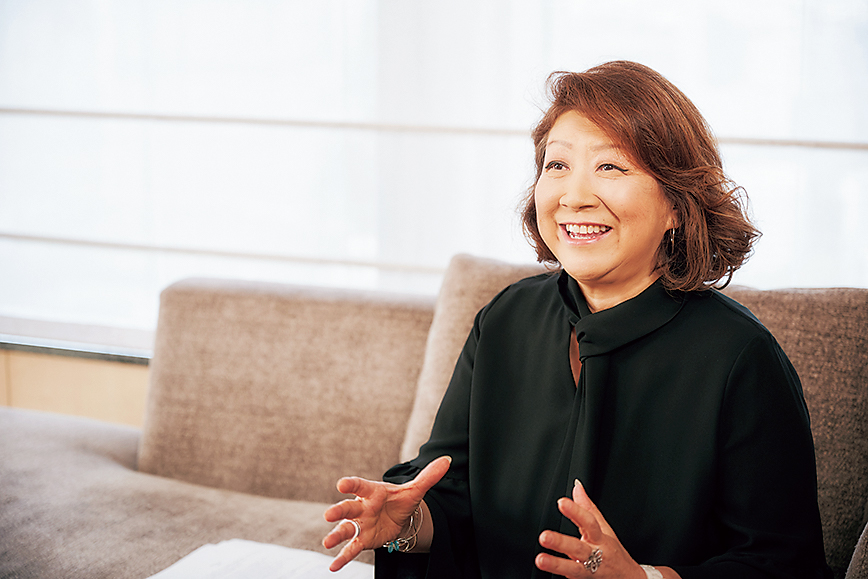
- You can eliminate the unnecessary things thoroughly and express the essence of nature or pursue a different kind of formative beauty. What you express and the thought you put into it depends on who you are. That’s the meaning of the phrase “When you arrange the flowers, they will become yourself”.
- Ikebana used to be treated as a required subject for bride training along with tea ceremony and cooking, but that era is already a thing of the past. Nowadays, ikebana is more popular overseas. There are enthusiastic students and Ikebana artists around the world. The other day, I made a big bamboo work in a large botanical garden called Longwood Gardens in Philadelphia. Since when my father (Hiroshi Teshigahara, the third iemoto of the Sougetsu School) created a work inspired by the strength of bamboo that he saw when he was trapped in heavy snow, bamboo became one of the materials that symbolize Sogetsu School, and it was also popular in Philadelphia.

- My major challenge now is how to convey the wonders of ikebana to everyone. It’s a little sad that Japanese people don’t really understand it even though it’s a traditional Japanese culture. So I want gentlemen to try it as well. The headquarters of Sogetsu School also has ikebana classes for men. Everyone in class gets really concentrated on flowers in silence. Some people even say, “I really feel alive when I’m here”.(laughs)
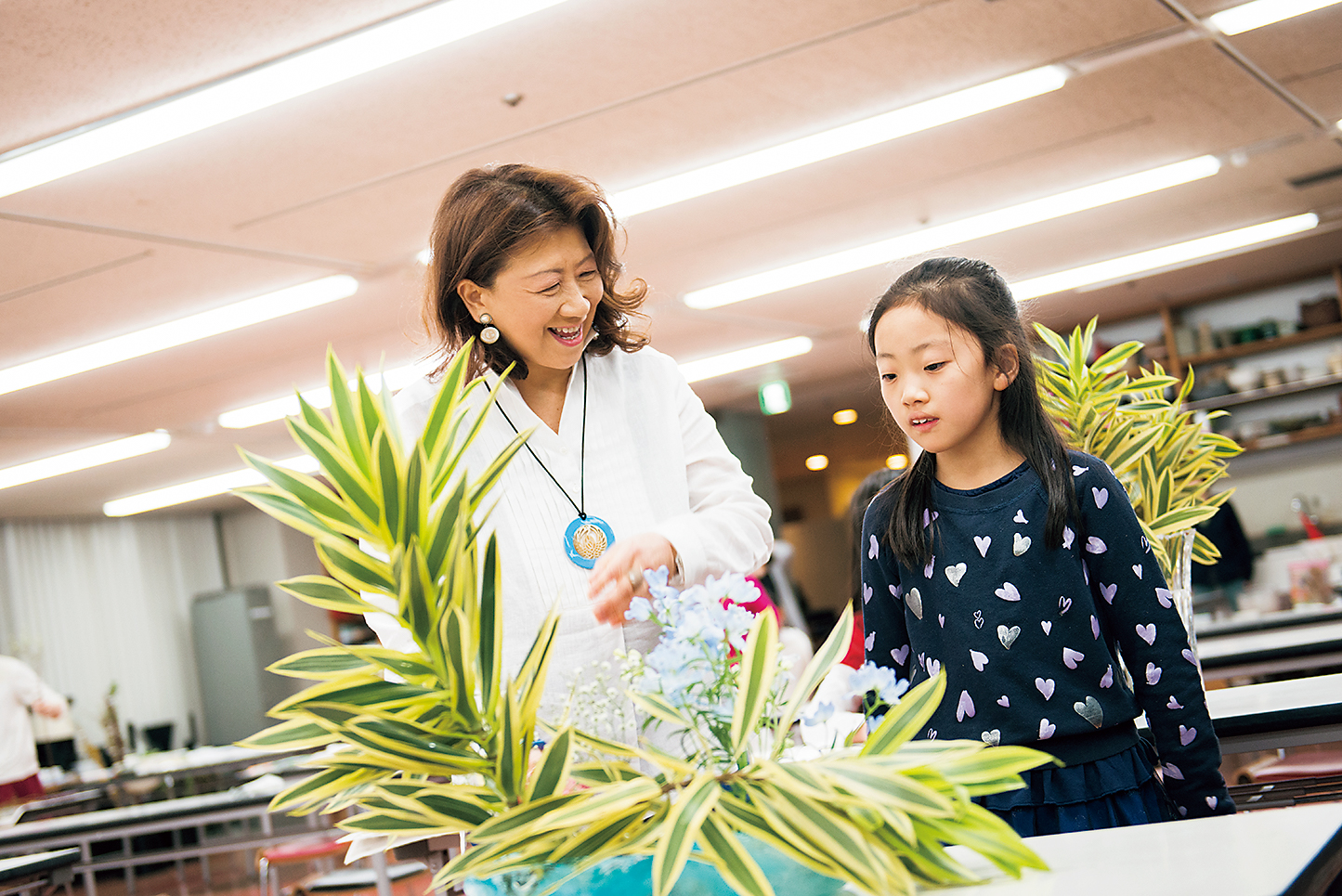
photo=Arisa Kasai - The Sogetsu Ikebana is always new and freely reflects your personality without being restricted by “forms”. In the Sogetsu style, anyone can use any material, anywhere, any time.
The harmony and fusion of the city’s artificial environment and the natural objects such as plants and flowers can be the magic key to enriching our lives.



